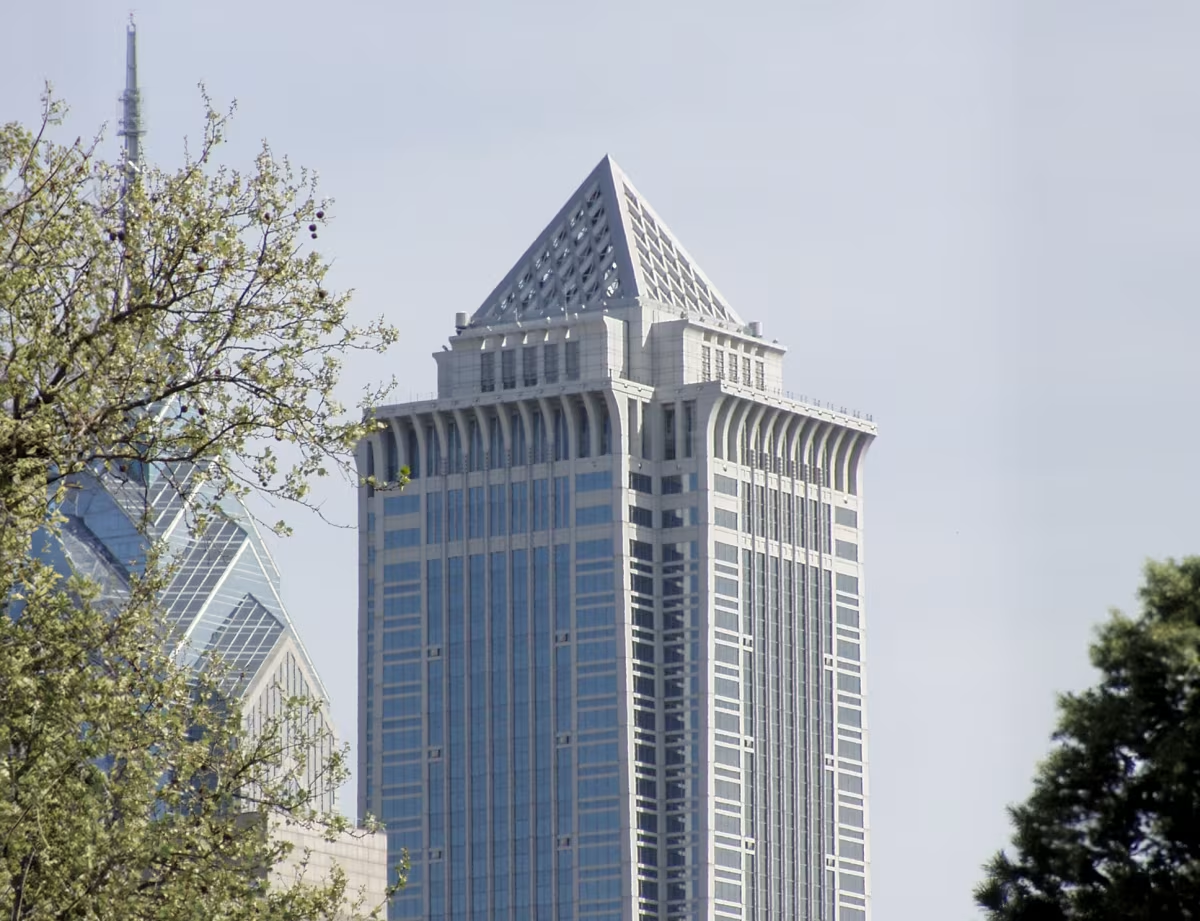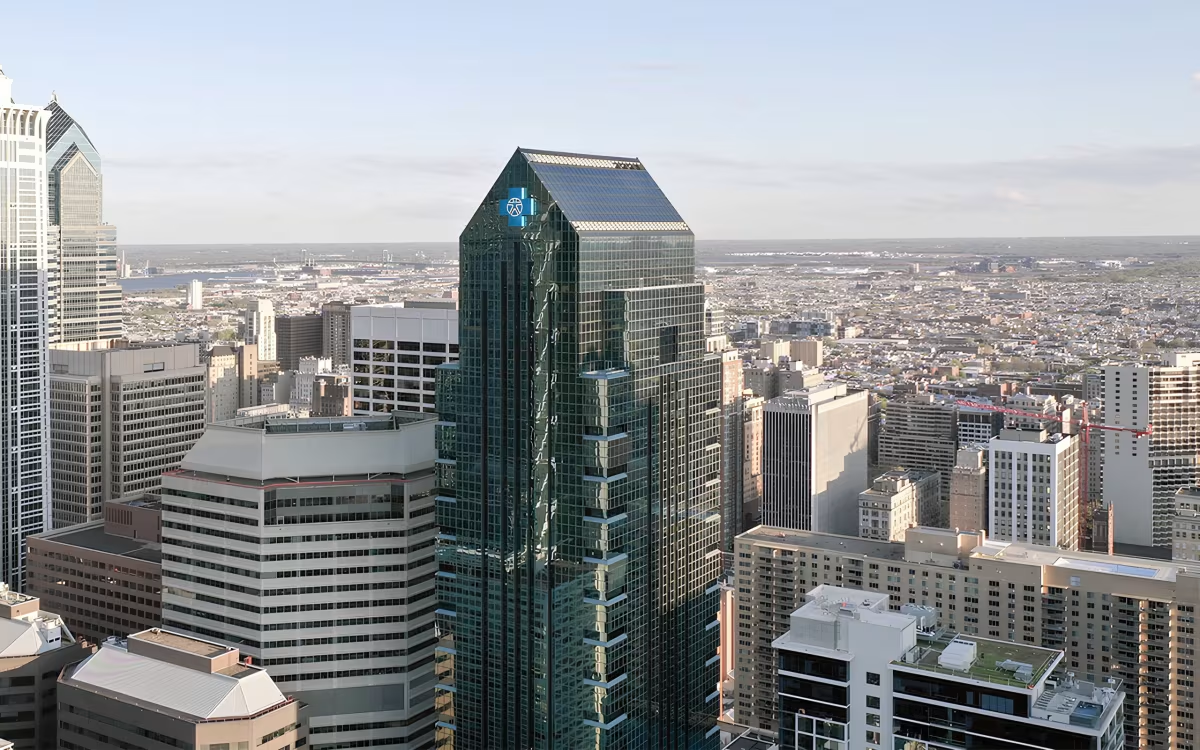BNY Mellon Center Philadelphia Building vs G. Fred DiBona Jr. Building


Comparing the BNY Mellon Center Philadelphia Building and the G. Fred DiBona Jr. Building is interesting because they both stand in Philadelphia, PA, and were completed in the same year, but they were designed by different architects.
This offers a unique glimpse at how rival designers approached projects in the same city during the same era.
Height & Size
The BNY Mellon Center Philadelphia Building is clearly the larger tower of the two, both in terms of height and number of floors. It rises to 791ft (241m) with 54 floors above ground, while the G. Fred DiBona Jr. Building reaches 564ft (172m) with 45 floors above ground.
Of course, each project may have faced different briefs or regulatory constraints, which we don't really know about and could also explain the outcome.
Architectural Style
Both the BNY Mellon Center Philadelphia Building and the G. Fred DiBona Jr. Building were designed in line with the aesthetic conventions of the Postmodernism style.
At the time, this style was at the height of its popularity. So both Kohn Pedersen Fox Associates and WZMH Architects followed what was in many ways expected of them, producing designs that fit comfortably within contemporary architectural norms, rather than breaking with convention.
Uses
Both the BNY Mellon Center Philadelphia Building and the G. Fred DiBona Jr. Building were designed to serve as commercial towers, and that has remained their main use since their completion, serving similar roles in the urban fabric.
The BNY Mellon Center Philadelphia Building also provides 160 parking spaces.
Structure & Facade
The two towers rely on different structural systems, reflecting distinct engineering strategies.
The BNY Mellon Center Philadelphia Building uses a Frame structural system, which relies on a regular grid of columns and beams to sustain its weight, while the G. Fred DiBona Jr. Building uses a Framed Tube In Tube system, that combines a strong central core with a perimeter tube of columns.
Yet, when it comes to their facade, they both employed the same solution, a Curtain Wall facade.
A curtain wall is a non-load-bearing facade hung from the structural frame. It is anchored to floor slabs and transfers only its own weight and wind loads, allowing for sleek, glassy exteriors.
| BNY Mellon Center Philadelphia Building | G. Fred DiBona Jr. Building | |
|---|---|---|
| Kohn Pedersen Fox Associates | Architect | WZMH Architects |
| 1988 | Construction Started | 1988 |
| 1990 | Year Completed | 1990 |
| Postmodernism | Architectural Style | Postmodernism |
| Commercial | Current Use | Commercial |
| 54 | Floors Above Ground | 45 |
| 241 m | Height (m) | 172 m |
| 251 | Tip Height | 190 |
| 137,071 m² | Usable Area (m²) | 70,700 m² |
| Frame | Structure Type | Framed Tube In Tube |
| Steel And Concrete | Vertical Structure Material | Steel |
| Steel And Concrete | Horizontal Structure Material | Concrete And Steel |
| No | Facade Structural? | No |
| Stone, Glass, Aluminum | Main Facade Material | Glass |
| WSP Cantor Seinuk | Structural Engineer | Severud Associates Consulting Engineers |
| PA | State | PA |
| Philadelphia | City | Philadelphia |
| 1735 Market Street | Address | 1901 Market Street |